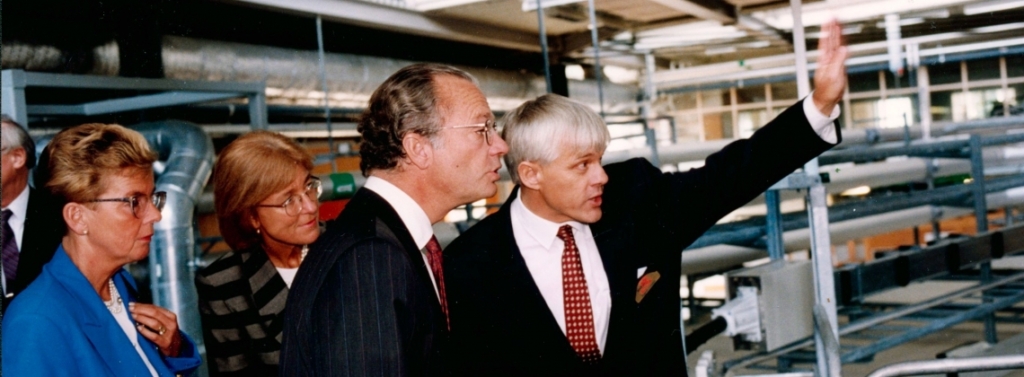
The MAX I–III rings on Ole Römers väg served approximately 1,000 users annually, and delivered research in a broad range of fields, including the electronic structure of solids, gases, aerosols and clusters, catalysis, environmental science, and soft matter and protein crystallography. After almost 30 years of successful operation and research, these rings were closed in 2015 to open the door for the new MAX IV facility.
A history of synchrotrons in brief
| 1944 Russian physicists Dmitri Ivanenko and Isaak Yakovlevich Pomeranchuk predict the existence of synchrotron radiation. |
| 1947 While trying to understand energy loss processes in their newly built synchrotron ring at General Electrics, physicists place a mirror looking at the pipe where the electrons are accelerated and are blinded by an intense light beam. The synchrotron light is observed experimentally. |
| 1950 Hannes Alfvén and Nicolaj Herlofsson predicted that the light from the Crab Nebula was synchrotron light. |
| 1956 A jet beam is observed, emanating from the elliptic galaxy M 87. The beam is created when energetic electrons, moving in spiral-shaped orbits, align with magnetic power lines. Synchrotron light is observed in nature for the first time. |
| 1961 A research programme is launched in the USA to examine synchrotron light and its possible applications. |
| 1962 The electron accelerator LUSY (Lund University Synchrotron) is constructed in Lund. |
| 1970 Funding is granted for a new synchrotron light facility at LUSY. |
| 1978 P-O Nilsson and Anders Flodström submit an application for the construction of a national synchrotron light source to the relevant organisation at the time, the Swedish Council for Science Research (NRF). |
| 1980 The Northern Apparatus Hall located inside the M building at the Faculty of Engineering in Lund is rarely used and is at risk of closure. As there is no room to expand LUSY for synchrotron physics, the MAX team becomes interested in taking over the apparatus hall. |
| 1981 The first storage ring purposefully designed to produce synchrotron light ring opens in Daresbury, England. |
| 1982 The Swedish Government supports the MAX project in the Finance Bill, and MAX receives its first funding. |
| 1983 The MAX team moves into the Northern Apparatus Hall in the M building. MAX I is constructed by the team members themselves, based on the experiences of the accelerator physicists at LUSY. However, there is also room for new ideas in Mikael Eriksson’s design for the racetrack microtrone, where electrons are injected and accelerated into the system. |
| 1987 MAX I is inaugurated. The storage ring has a circumference of 32 metres. |
| 1980s and 1990s The third generation of synchrotron light sources appears, where synchrotron light is produced not only where the rings bend, but also in the straight sections using insertion devices (wigglers and undulators). The first of these sources, the European Synchrotron Radiation Facilitity ESRF which a storage ring with a circumference of 800 meters is being built in Grenoble starting in 1990. Two similar projects are completed in Japan and the USA. |
| 1992 MAX II Construction begins. The new storage ring, which has a circumference of 96 metres, is connected to MAX I. The facility requires a new building. |
| 1995 The king of Sweden, Carl XVI Gustav, inaugurates MAX II. |
| 2007 the MAX III storage ring is completed. The ring, which has a circumference of 36 metres, is used to test some of the technology that will be used in MAX IV. |
| 2009 The financing for MAX IV is finalised. |
| 2010 The MAX IV construction site opens on 22 November. |
| 2011 Construction starts on MAX IV. The first beamline programme is launched. |
| 2015 Construction is completed and the tenant, Lund University, starts to move in. |
| 2016 MAX IV Laboratory is inaugurated on the brightest day of the year, 21 June at 13:08:55 when the sun peaks above the facility, by the Swedish Prime Minister in the presence of the King of Sweden and 500 invited guests. |